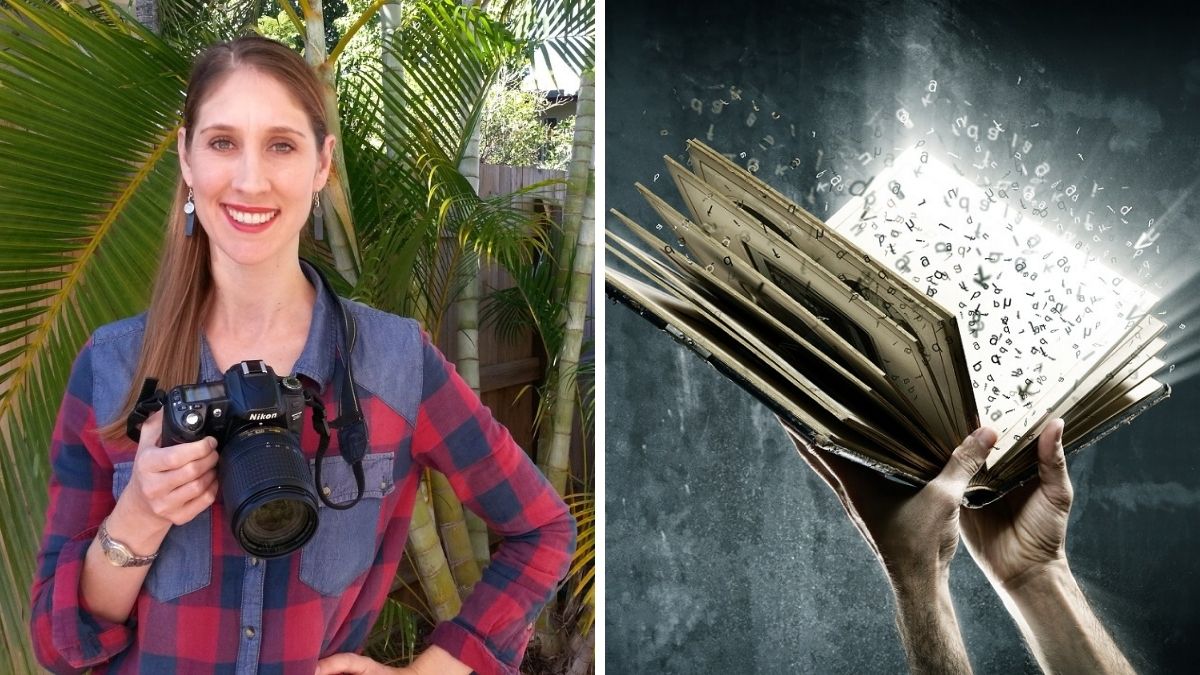
The easy way to image resize and save high-resolution photos. NOW!
Hello and welcome to Forever Young Autobiographies – Ask Nicola.
As a journalist and writing coach I’m asked lots of questions about planning, writing, polishing and publishing life stories for family and friends.
And in this series I give you a behind-the-scenes look at how I help new writers just like you!
This week’s Ask Nicola answers the following question:
Help! I am getting my book printed and have been told the JPEG pictures are not good enough quality. What does this mean? How to fix?
This is a common but essential question!
The last thing you want after writing is for your autobiography or memoir book to come back with blurry pictures.
Or worse: white holes where pictures should have been printed. Eek!
So let’s address a few common concerns about high-resolution images…
Related article – How to start writing: The ultimate guide about planning to write life stories
What are high-resolution images?
Pictures and images need to be a certain quality to be OK for printing.
Without getting too technical, a printing press uses dots of ink to print images onto paper.
Therefore, the more dots closer together, the better quality and more detailed your image will be.
Printers refer to this as DPI: dots per inch.
However, all these extra dots mean more data.
So the higher quality (dpi) your image the larger the file size.
Related article – Life in pictures: Make a life-story scrapbook album in 3 easy steps
What sizes are high-resolution images?
You can save images at various sizes.
But what you pick will depend on the purpose of your image.
For instance, if it is for digital (documents and email) use low resolution of say 72dpi.
However, for print (books and articles) you need high quality of 200-300dpi.
What is pixel resolution?
Images for digital use are also measured by pixels.
This is referred to as PPI: pixels per inch.
Pixels (pix) are electronic measurement units that are illuminated for display.
For example, take a standard-size photo of 10x15cm (4×6 inch).
So a low-resolution image might have a pixel measurement of 283x425pix.
Whereas a high-resolution image might have a bigger pixel measurement of 1181x1772pix.
Online calculators like the Pixel Calculator can be very handy for compare sizing by cm, dpi, pix.
Related article – Proofreading tips for revising and editing your writing
How can you tell if an image is high resolution?
The best way to confirm high-resolution images preprint is to open them in a photo-editing app or program such as Microsoft Paint or Paintbrush for Mac.
Then use the menus to select view image details or status.
Another quick test is to check an image’s properties for its file size.
The bigger the file size the higher quality the image.
Digital image files are typically saved in small kilobytes (KB), bigger megabytes (MB) or larger gigabytes (GM).
A low-resolution image of 72dpi might be about size 40kb.
Whereas a high-resolution image of 200dpi might be about 265kb.
A third way to see if a picture will print high res is to save as a PDF document and view on screen at 100 per cent.
Does the picture look blurry, fuzzy or pixelated?
If so, you need to use a higher quality image.
Related article – Book covers: How to create a memorable cover design
How to make high-resolution images
The best way to make high-resolution images is to save them as high resolution in the first place!
This could be scanning images at 300dpi or adjusting your camera’s file-saving settings to high quality before a photo shoot.
But all is not lost if you can’t do this and you are stuck with a low-resolution image.
You can use a photo-editing app or software to up the image size.
Alternatively, if your phone or computer doesn’t come with such programs try a free online option like Img2Go.
However, be aware this new ‘higher quality’ image will not be textbook perfect because you are making ‘more’ image from less data.
So do this in a pinch if you have no other options.
Related article – How to get your own book printed without going crazy!
Final say: High-resolution images
To conclude, you absolutely need high-resolution images for printing.
Get top-quality images with a few key points: save images at 200-300dpi, double-check your image file sizes before printing, and resize if required using a photo-editing app or software.
Certainly, just as we polish our words into a final draft so too do our photos and images need attention.
In short, photos are always a highlight for any reader so do your best to make them clear and fabulous.
Happy writing!
Free gift!
Help polish your book ready for publication with the free Structure Success video training. Use this resource to double-check your book has key memories in logical chapters. Sign up here or fill in the form below.
Your say
Do you have any other high-resolution images questions? I’d love to help. Send me an email or leave a reply in the comments section at the end of this article.
Get in touch
Have you hit a roadblock planning, writing, polishing or finishing your autobiography? Let me know here so I can help!
Don’t miss an article
Sign up here or fill in the form below for instant notifications about new articles.
This article first appeared on the website Forever Young Autobiographies.com.

